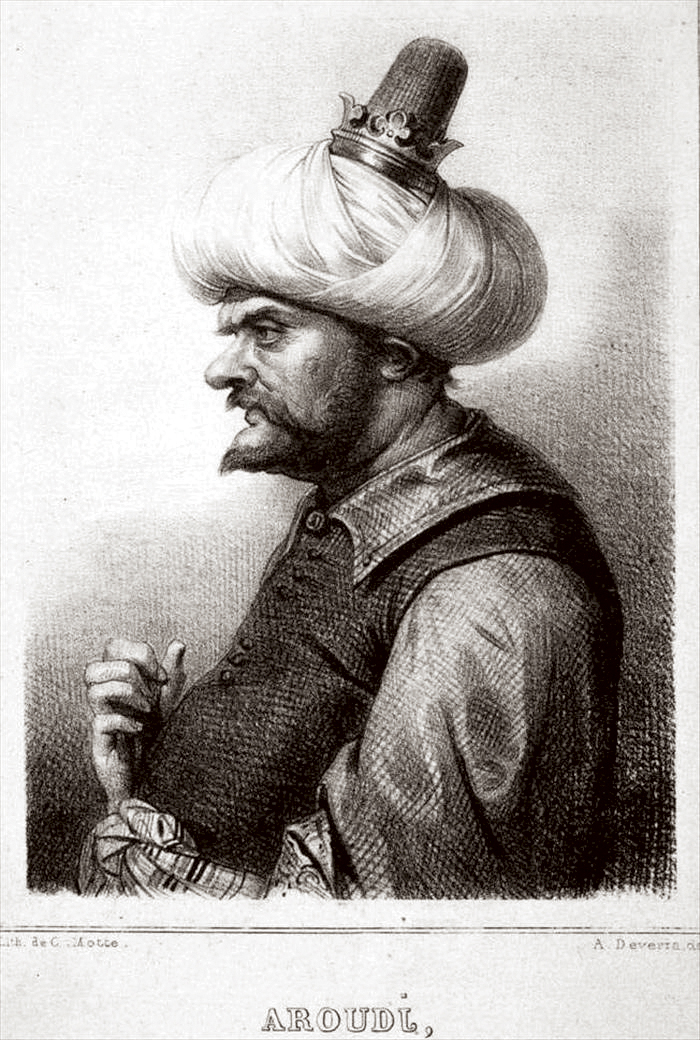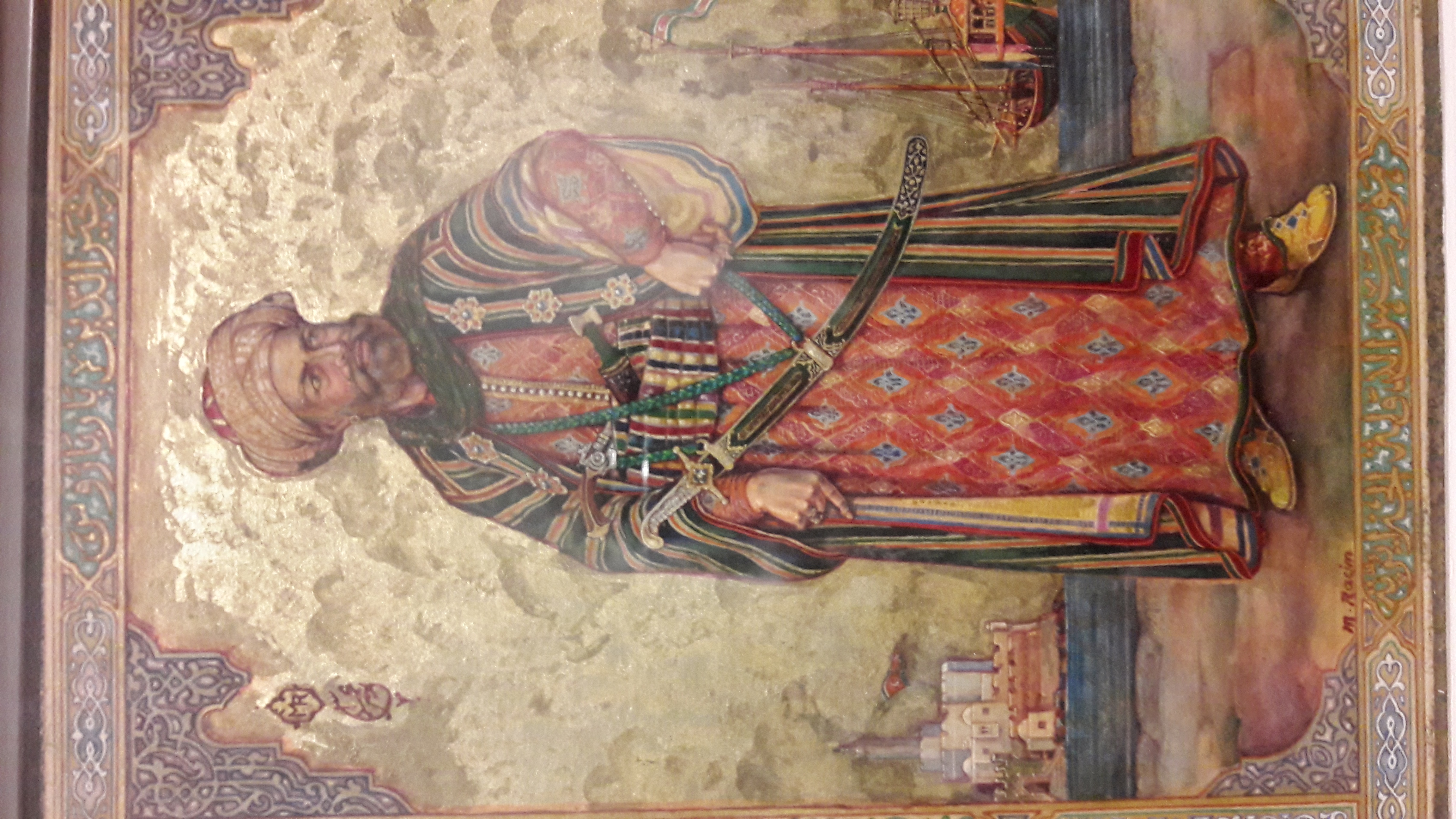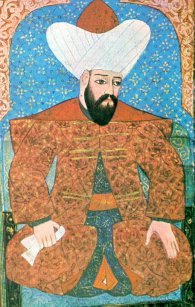|
Güzelce Ali Pasha
Güzelce Ali Pasha (''Ali Pasha the Handsome''; died 9 March 1621), also known as Çelebi Ali Pasha or İstanköylü Ali Pasha, was an Ottoman statesman and military figure. He was Kapudan Pasha (grand admiral of the Ottoman Navy) around 1617 and Grand Vizier of the Ottoman Empire from 1619 to 1621.İsmail Hâmi Danişmend, Osmanlı Devlet Erkânı, Türkiye Yayınevi, İstanbul, 1971 (Turkish) He was the son of İstanköylü Ahmed Pasha, an Ottoman governor of Tunis. In 1616 he married Fatma Sultan, a daughter of Sultan Mehmed III by his consort Handan Hatun. Güzelce Ali Pasha died of inflammation of the gallbladder on 9 March 1621, although there were rumours that Sultan Osman II himself had crept into Ali's tent and strangled him with his own hands due to an ill-advised military campaign on the Polish borderlands. He was of Turk origin.Uzunçarşılı, İsmail Hakkı, (1954) Osmanlı Tarihi III. Cilt, 2. Kısım, XVI. Yüzyıl Ortalarından XVII. Yüzyıl Sonuna kadar), A ... [...More Info...] [...Related Items...] OR: [Wikipedia] [Google] [Baidu] |
Pasha
Pasha (; ; ) was a high rank in the Ottoman Empire, Ottoman political and military system, typically granted to governors, generals, dignitary, dignitaries, and others. ''Pasha'' was also one of the highest titles in the 20th-century Kingdom of Egypt and it was also used in Morocco in the 20th century, where it denoted a regional official or governor of a district. Etymology The English word ''pasha'' comes from Turkish language, Turkish ('; also ()). The Oxford English Dictionary attributes the origin of the English borrowing to the mid-17th century. The etymology of the Turkish word itself has been a matter of debate. Contrary to titles like emir (''amīr'') and bey (sir), which were established in usage much earlier, the title ''pasha'' came into Ottoman Empire, Ottoman usage right after the reign of Osman I (d. 1324), though it had been used before the Ottomans by some Anatolian beyliks, Anatolian Turkish rulers of the same era. Old Turkish had no fixed distinction betwe ... [...More Info...] [...Related Items...] OR: [Wikipedia] [Google] [Baidu] |
Ottoman Navy
The Ottoman Navy () or the Imperial Navy (), also known as the Ottoman Fleet, was the naval warfare arm of the Ottoman Empire. It was established after the Ottomans first reached the sea in 1323 by capturing Praenetos (later called Karamürsel after the founder of the Ottoman Navy), the site of the first Ottoman naval shipyard and the nucleus of the future navy. During its long existence, the Ottoman Navy was involved in many conflicts and signed a number of maritime treaties. It played a decisive role in the conquest of Constantinople and the subsequent expansion into the Mediterranean and Black Seas. At its height in the 16th century, the Navy extended to the Indian Ocean, sending an expedition to Indonesia in 1565, and by the early 17th century operated as far as the Atlantic. Commensurate with the decline and modernization of the empire in the late 18th century, the Ottoman Navy stagnated, albeit remaining among the largest in the world: with nearly 200 warships, incl ... [...More Info...] [...Related Items...] OR: [Wikipedia] [Google] [Baidu] |
Military Personnel From Istanbul
A military, also known collectively as armed forces, is a heavily armed, highly organized force primarily intended for warfare. Militaries are typically authorized and maintained by a sovereign state, with their members identifiable by a distinct military uniform. They may consist of one or more military branches such as an army, navy, air force, space force, marines, or coast guard. The main task of a military is usually defined as defence of their state and its interests against external armed threats. In broad usage, the terms "armed forces" and "military" are often synonymous, although in technical usage a distinction is sometimes made in which a country's armed forces may include other paramilitary forces such as armed police. Beyond warfare, the military may be employed in additional sanctioned and non-sanctioned functions within the state, including internal security threats, crowd control, promotion of political agendas, emergency services and reconstruction, ... [...More Info...] [...Related Items...] OR: [Wikipedia] [Google] [Baidu] |
Kapudan Pashas
The Kapudan Pasha (, Modern Turkish: ''Kaptan Paşa''), also known in Turkish as Kaptan-ı Derya ("Captain of the Seas"), was the commander-in-chief of the navy of the Ottoman Empire. Around 160 captains served between the establishment of the post under Bayezid I and the office's replacement by the more modern Ottoman Ministry of the Navy (''Bahriye Nazırlığı'') during the Tanzimat reforms. The title of ''Kapudan Pasha'' itself is only attested from 1567 onwards; earlier designations for the supreme commander of the fleet include ''derya begi'' (" beg of the sea") and ''re'is kapudan'' ("head captain"). See also * List of Fleet Commanders of the Ottoman Navy, for the Kapudan Pasha's replacements after 1877 * List of Ottoman admirals, for Turkish commanders beneath the rank of the Kapudan Pashas Notes Sources {{DEFAULTSORT:Kapudan Pashas, List Of Ottoman Ottoman Navy lists Kapudan Kapudan Pasha The Kapudan Pasha (, modern Turkish: ), also known ... [...More Info...] [...Related Items...] OR: [Wikipedia] [Google] [Baidu] |
17th-century Grand Viziers Of The Ottoman Empire
The 17th century lasted from January 1, 1601 (represented by the Roman numerals MDCI), to December 31, 1700 (MDCC). It falls into the early modern period of Europe and in that continent (whose impact on the world was increasing) was characterized by the Baroque cultural movement, the latter part of the Spanish Golden Age, the Dutch Golden Age, the French '' Grand Siècle'' dominated by Louis XIV, the Scientific Revolution, the world's first public company and megacorporation known as the Dutch East India Company, and according to some historians, the General Crisis. From the mid-17th century, European politics were increasingly dominated by the Kingdom of France of Louis XIV, where royal power was solidified domestically in the civil war of the Fronde. The semi-feudal territorial French nobility was weakened and subjugated to the power of an absolute monarchy through the reinvention of the Palace of Versailles from a hunting lodge to a gilded prison, in which a greatly expande ... [...More Info...] [...Related Items...] OR: [Wikipedia] [Google] [Baidu] |
List Of Kapudan Pashas
The Kapudan Pasha (, Modern Turkish: ''Kaptan Paşa''), also known in Turkish as Kaptan-ı Derya ("Captain of the Seas"), was the commander-in-chief of the navy of the Ottoman Empire. Around 160 captains served between the establishment of the post under Bayezid I and the office's replacement by the more modern Ottoman Ministry of the Navy (''Bahriye Nazırlığı'') during the Tanzimat reforms. The title of ''Kapudan Pasha'' itself is only attested from 1567 onwards; earlier designations for the supreme commander of the fleet include ''derya begi'' (" beg of the sea") and ''re'is kapudan'' ("head captain"). See also * List of Fleet Commanders of the Ottoman Navy, for the Kapudan Pasha's replacements after 1877 * List of Ottoman admirals, for Turkish commanders beneath the rank of the Kapudan Pashas Notes Sources {{DEFAULTSORT:Kapudan Pashas, List Of Ottoman Ottoman Navy lists Kapudan Kapudan Pasha The Kapudan Pasha (, modern Turkish: ), also known as ... [...More Info...] [...Related Items...] OR: [Wikipedia] [Google] [Baidu] |
List Of Ottoman Grand Viziers
The grand vizier of the Ottoman Empire ( or ''Sadr-ı Azam'' (''Sadrazam''); Ottoman Turkish language, Ottoman Turkish: or ) was the ''de facto'' prime minister of the Sultan of the Ottoman Empire, sultan in the Ottoman Empire, with the absolute power of attorney and, in principle, removable only by the Sultan of the Ottoman Empire, sultan himself in the classical period, before the Tanzimat Fermanı, Tanzimat reforms, or until the Second Constitutional Era, 1908 Revolution. He held the imperial seal and could summon all other viziers to attend to affairs of the state in the Imperial Council (Ottoman Empire), Imperial Council; the viziers in conference were called "''kubbe'' viziers" in reference to their meeting place, the ''Kubbealtı'' ('under-the-dome') in Topkapı Palace. His offices were located at the Sublime Porte. History During the emerging phases of the Ottoman state, "vizier" was the only title used. The first of these Ottoman viziers who was titled "grand vizier" was ... [...More Info...] [...Related Items...] OR: [Wikipedia] [Google] [Baidu] |
Turkish People
Turks (), or Turkish people, are the largest Turkic peoples, Turkic ethnic group, comprising the majority of the population of Turkey and Northern Cyprus. They generally speak the various Turkish dialects. In addition, centuries-old Turkish communities in the former Ottoman Empire, ethnic Turkish communities still exist across other former territories of the Ottoman Empire. Article 66 of the Constitution of Turkey defines a ''Turk'' as anyone who is a citizen of the Turkish state. While the legal use of the term ''Turkish'' as it pertains to a citizen of Turkey is different from the term's ethnic definition, the majority of the Turkish population (an estimated 70 to 75 percent) are of Turkish ethnicity. The vast majority of Turks are Sunni Islam, Sunni Muslims, with a notable minority practicing Alevism. The ethnic Turks can therefore be distinguished by a number of cultural and regional variants, but do not function as separate ethnic groups. In particular, the culture of the ... [...More Info...] [...Related Items...] OR: [Wikipedia] [Google] [Baidu] |
Mehmed III
Mehmed III (, ''Meḥmed-i sālis''; ; 26 May 1566 – 22 December 1603) was the sultan of the Ottoman Empire from 1595 until his death in 1603. Mehmed was known for ordering the execution of his brothers and leading the army in the Long Turkish War, during which the Ottoman army was victorious at the decisive Battle of Keresztes. This victory was however undermined by some military losses such as in Győr and Nikopol. He also ordered the successful quelling of the Jelali rebellions. The sultan also communicated with the court of Elizabeth I on the grounds of stronger commercial relations and in the hopes of England to ally with the Ottomans against the Spanish. Early life Mehmed was born at the Manisa Palace on 26 May 1566, during the reign of his great-grandfather, Suleiman the Magnificent. He was the son of Murad III, himself the son of Selim II, who was the son of Sultan Suleiman and Hurrem Sultan. His mother was Safiye Sultan, an Albanian from the Dukagjin Highlan ... [...More Info...] [...Related Items...] OR: [Wikipedia] [Google] [Baidu] |
Tunis Eyalet
Ottoman Tunisia, also known as the Regency of Tunis, refers to a territory of Ottoman Empire that existed from the 16th to 19th century in what is largely modern-day Tunisia. During the period of Ottoman Rule, Tunis was administratively integrated into the Ottoman Empire as the Eyalet of Tunis. The Ottoman presence in the Maghreb began with the conquest of Algiers in 1516 by the Ottoman Turkish corsair and ''beylerbey'' Aruj (Oruç Reis). In 1534, the Ottoman navy under the command of Kapudan Pasha Hayreddin Barbarossa, himself the younger brother of Aruj, attacked and successfully captured Tunis, which was then a territory of the Hafsid dynasty, Hafsids. However, less than a year later, Emperor Charles V sent a large, multinational invasion force to Conquest of Tunis (1535), wrest control of Tunis, which attacked from across the Strait of Sicily and overwhelmed the city's Ottoman defenders. Following the Conquest of Tunis (1574), final Ottoman reconquest of Tunis from Spai ... [...More Info...] [...Related Items...] OR: [Wikipedia] [Google] [Baidu] |
Kapudan Pasha
The Kapudan Pasha (, modern Turkish: ), also known as the (, modern: , "Captain of the Sea") was the grand admiral of the Ottoman Navy. Typically, he was based at Galata and Gallipoli during the winter and charged with annual sailings during the summer months. The title of ''Kapudan Pasha'' itself is only attested from 1567 onwards; earlier designations for the supreme commander of the fleet include (" bey of the sea") and ("head captain"). The title ''Derya Bey'' as an official rank within the Ottoman state structure originated during the reign of Bayezid I (). Following the 1453 conquest of Constantinople, Mehmed II raised Baltaoğlu Süleyman Bey to the status of sanjak bey for his efforts against the Byzantines in the Golden Horn.Shaw, Stanford J''History of the Ottoman Empire and Modern Turkey'' Vol. 1, pp. 131 ff. Cambridge University Press (Cambridge), 1976. Accessed 12 Sept 2011. Baltaoğlu received the sanjak of Gallipoli (the principal Turkish naval base) an ... [...More Info...] [...Related Items...] OR: [Wikipedia] [Google] [Baidu] |
Grand Vizier Of The Ottoman Empire
The grand vizier of the Ottoman Empire ( or ''Sadr-ı Azam'' (''Sadrazam''); Ottoman Turkish language, Ottoman Turkish: or ) was the ''de facto'' prime minister of the Sultan of the Ottoman Empire, sultan in the Ottoman Empire, with the absolute power of attorney and, in principle, removable only by the Sultan of the Ottoman Empire, sultan himself in the classical period, before the Tanzimat Fermanı, Tanzimat reforms, or until the Second Constitutional Era, 1908 Revolution. He held the imperial seal and could summon all other viziers to attend to affairs of the state in the Imperial Council (Ottoman Empire), Imperial Council; the viziers in conference were called "''kubbe'' viziers" in reference to their meeting place, the ''Kubbealtı'' ('under-the-dome') in Topkapı Palace. His offices were located at the Sublime Porte. History During the emerging phases of the Ottoman state, "vizier" was the only title used. The first of these Ottoman viziers who was titled "grand vizier" was ... [...More Info...] [...Related Items...] OR: [Wikipedia] [Google] [Baidu] |








